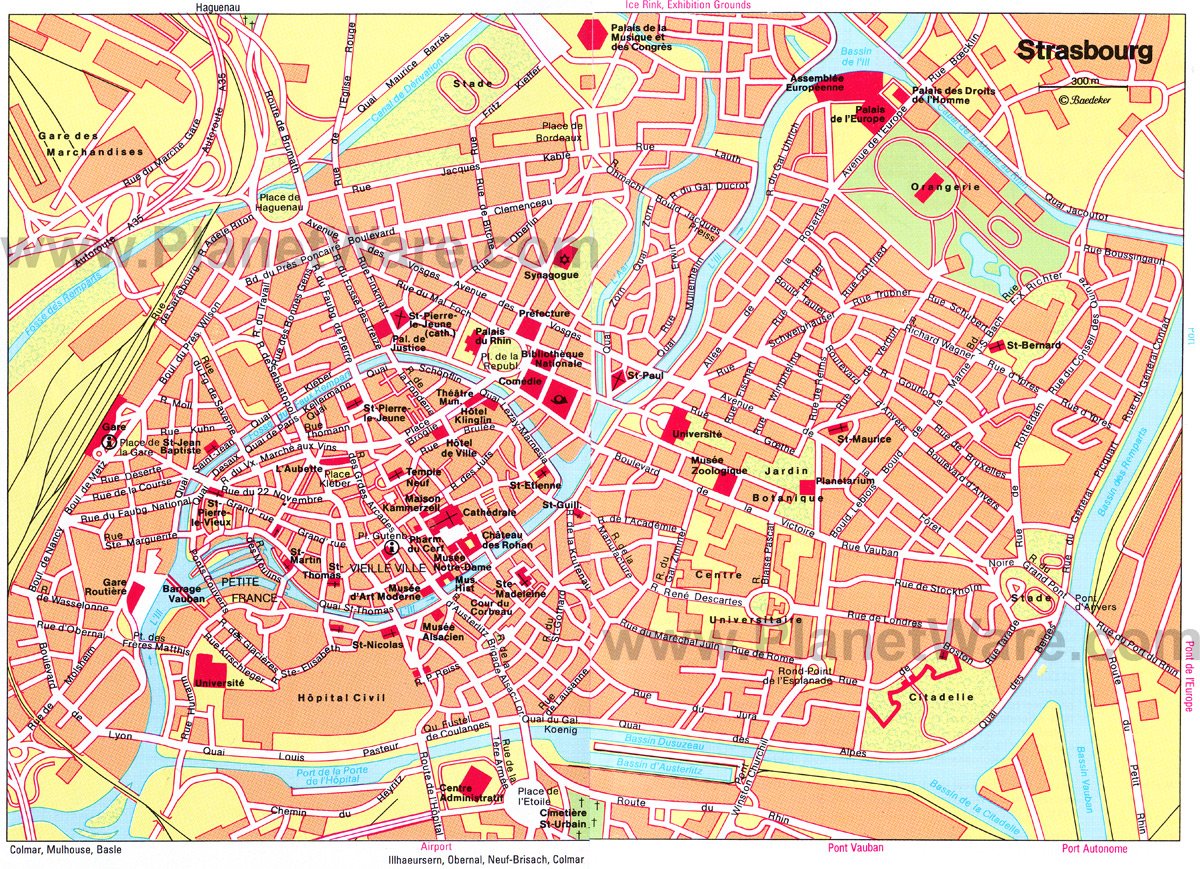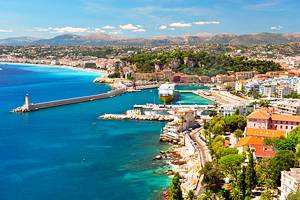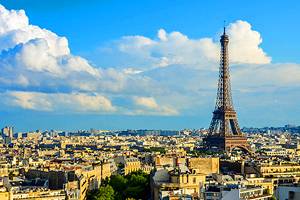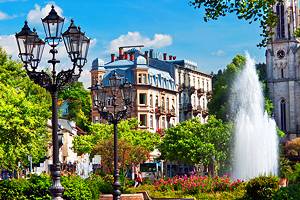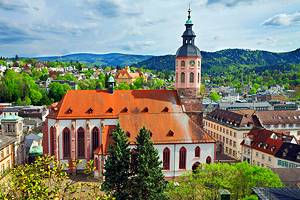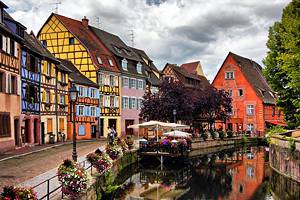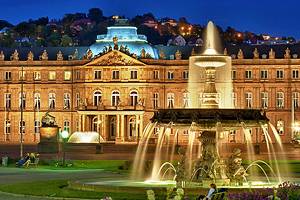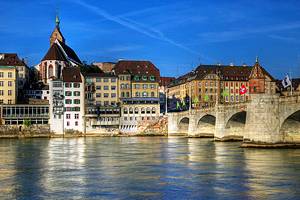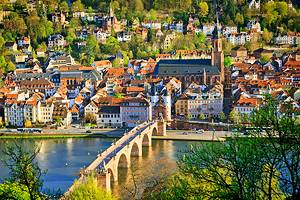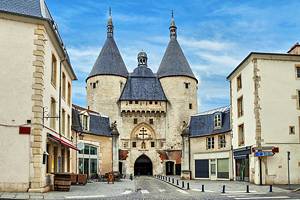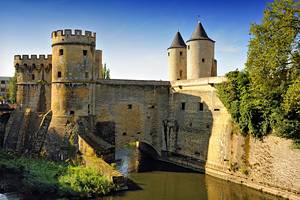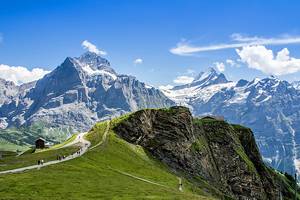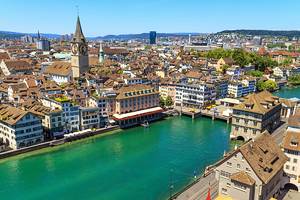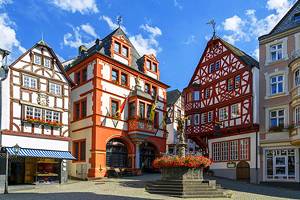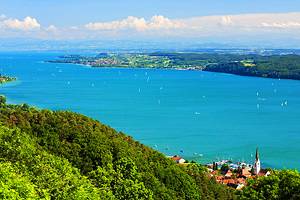Attractions & Places to Visit in Strasbourg
Author Lisa Alexander spent two years living in France and has traveled the country extensively.
With its awe-inspiring cathedral, charming burghers' houses, and elegant Louis XV buildings, Strasbourg has a distinctive old-world character. The quaint cobblestone streets and picturesque canals of the medieval quarters (on the Grande-Île) are some of the city's main attractions for tourists.
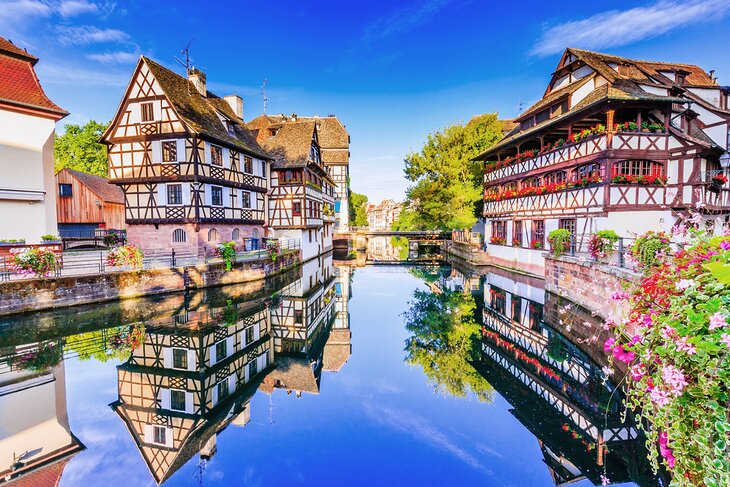
Thanks to its advantageous location at the intersection of important traffic and commerce routes on the Rhine River, Strasbourg has prospered throughout its 2,000-year history. In the 13th century, it became the Holy Roman Empire's richest city, where art and learning flourished.
Today, Strasbourg is still a city of culture. Besides its incredible collection of historic monuments, Strasbourg boasts exceptional museums of fine arts, archaeology, and traditional Alsatian crafts.
Learn more about places to visit in the city with our list of things to do in Strasbourg.
Cathédrale Notre-Dame de Strasbourg
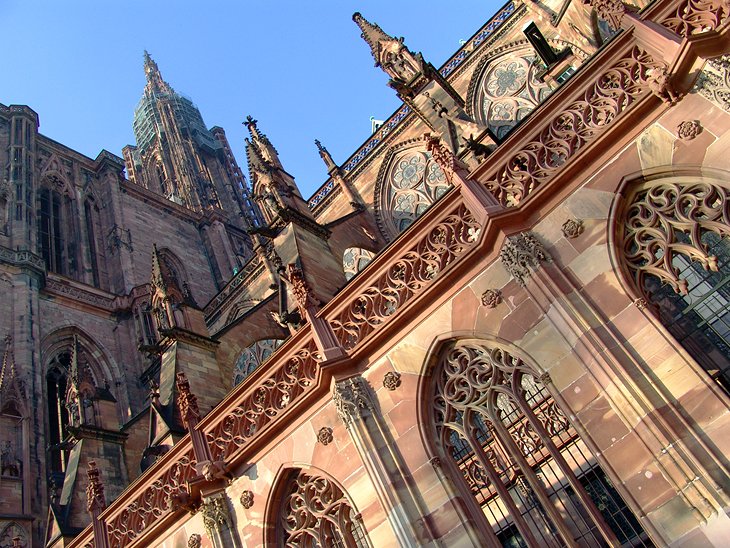
Considered one of the most beautiful monuments of Gothic architecture in Europe, the Cathédrale Notre-Dame presides over Strasbourg with its soaring tower. This spire, reaching 142 meters, was the highest point in the Christian world until the 19th century.
The cathedral owes its delicate look to the construction from red Vosges sandstone, which is ornately embellished. Hundreds of Christian figures are sculpted from this stone on the façade. This elaborate exterior functions as a lesson in biblical stories.
The 13th-century west front façade depicts scenes of Christ's Passion, the work of Master Erwin and his successors. The south side of the façade features famous allegorical sculptures of the Church and the Synagogue created by a German artist circa 1230.
The Strasbourg Cathedral has exceptional medieval stained-glass windows (dating from the 12th to 14th centuries) that compare in magnificence to those at the Cathedral in Chartres. The rose window is particularly splendid.
In the south transept stands L'Horloge Astronomique, a Renaissance astronomical clock. This masterpiece of timekeeping entertains visitors with an automated parade of the apostles and a crowing rooster every day at 12:30pm.
After touring the inside of the Cathedral, you can ascend to the top of the bell tower. The tower's viewing platform affords sweeping panoramas of the city, the Rhine plains, the Black Forest, and the Vosges Mountains.
The cathedral is the heart of Strasbourg's UNESCO-listed Grande-Île district. The Grande-Île (a large island surrounded by the Ill River) is the historic center of the city.
Mass is celebrated at the Cathédrale Notre-Dame de Strasbourg, Monday through Friday at 7:30am and 9am and on Saturdays at 9am. On Sundays, the regular Mass is held at 9:30am and Mass with Gregorian chants is held at 11am and at 6pm.
Address: Place de la Cathédrale, Strasbourg
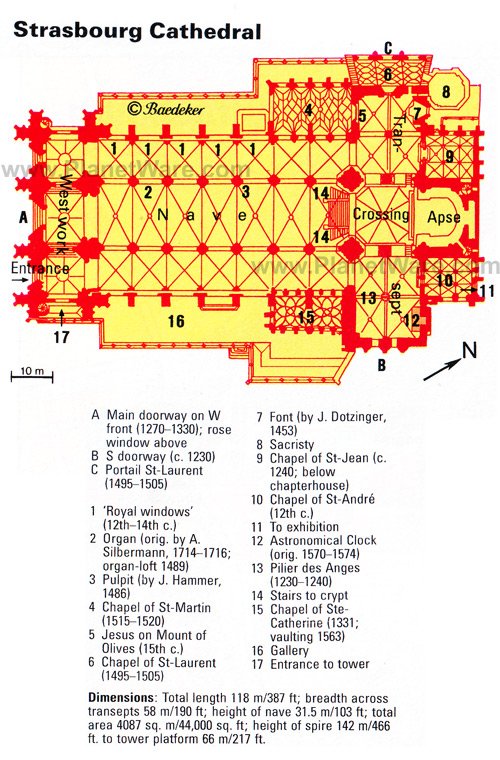
Wander the Narrow Streets of Quartier des Tanneurs (La Petite France)
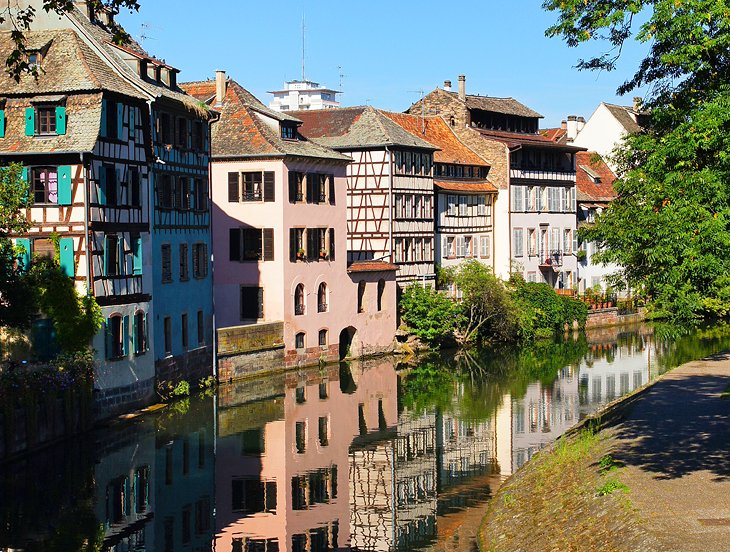
Within Strasbourg's UNESCO-listed historic center, the Quartier des Tanneurs (also known as "La Petite France") is a winding maze of canals and narrow, old streets lined by perfectly maintained half-timbered houses. During the 16th and 17th centuries, the neighborhood was home to the city's leather tanners and fishermen.
The most charming street of the quarter is the Rue du Bain-aux-Plantes. Strolling along this cobblestone thoroughfare offers a chance to admire the traditional Alsatian houses with their flower-bedecked windowsills.
Look out for the Maison des Tanneurs, a half-timbered house at 42 Rue du Bain-aux-Plantes. Built in 1572 and listed as a Historic Monument, the Maison des Tanneurs is now a fine-dining restaurant with cozy interior décor and an outdoor terrace overlooking the river banks. It's one of the best places in Strasbourg for authentic Alsatian cuisine and a great spot to try a traditional "Flammekueche" (Tarte Flambée), a thin, crispy flatbread typically topped with cream, onions, and bacon, making it perfect for sharing.
To the southwest are the Ponts Couverts (Covered Bridges), which include four of the town's medieval defense towers. From the Grande Écluse covered bridge, there is a panoramic view of the Strasbourg cityscape. The Grande Écluse is open to the public during the day and illuminated at night.
The Quartier des Tanneurs has an alluring riverside ambience. Along the tree-lined river banks, tourists and locals alike enjoy taking walks in this pleasant area, away from the urban hustle and bustle.
Maison Kammerzell
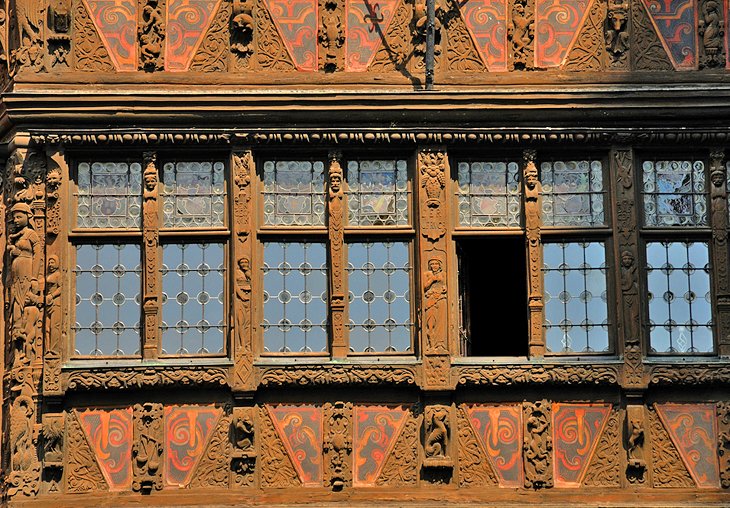
The Maison Kammerzell is the finest old burgher's house in the city. Considered a gem of Alsatian architecture, the Kammerzell House (built between 1427 and 1589) features half-timbered upper floors, exquisite leaded stained-glass windows, and richly carved ornamentation.
The building's ground floor, with its carved stone arches, served as a space where merchants sold their wares during the 15th century.
The Maison Kammerzell has been converted into a hotel and has a renowned fine-dining restaurant with windows that look out onto the cathedral's façade.
Another interesting half-timbered house located in the area (at the Place de la Cathédrale and Rue Mercière) is the Pharmacie du Cerf. This building was constructed in the 14th century (with renovations in later centuries) on a site that functioned as an apothecary/pharmacy from 1268 until 2000.
Nearby on the Rue des Juifs are the ruins of an ancient Roman fort, giving visitors a sense of the city's cultural heritage that dates back two millennia.
Address: Maison Kammerzell, 16 Place de la Cathédrale, Strasbourg
Official site: http://www.maison-kammerzell.com/en
Eglise Saint-Thomas
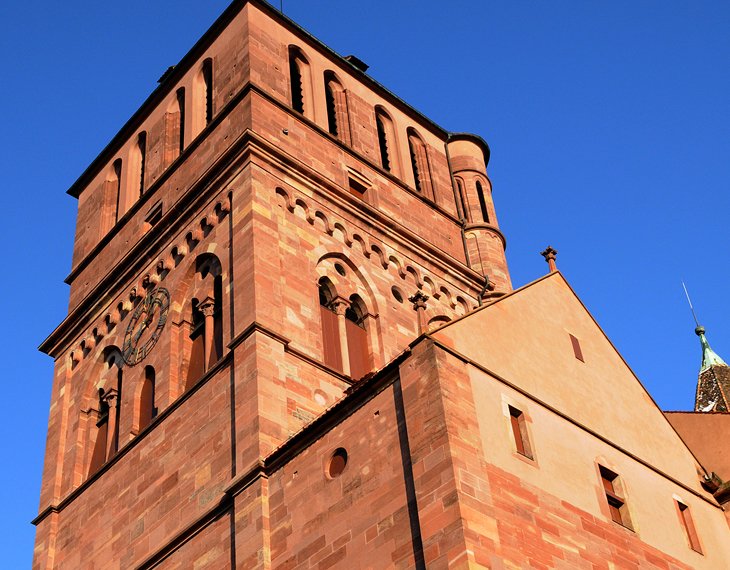
The Eglise Saint-Thomas is located on the site of an ancient church built in the early 6th century, dedicated to the Apostle Saint Thomas. After being destroyed by fire, the Saint-Thomas Church was rebuilt in the 12th century.
During its 800-year-history, the Saint-Thomas Church has been most renowned for the role it played during the Protestant Reformation of Alsace. The church was a center of the Lutheran movement in the region.
The church has a clock, which for 400 years has struck the hours four minutes too soon. The idea was to make itself heard before the Cathedral clock strikes.
Alongside the famous clock, the church features a remarkable Baroque organ created by Johann Andreas Silbermann in 1741, regarded as one of the finest and best-preserved examples of an 18th-century French-German organ. This organ was played by Wolfgang Amadeus Mozart during his visit to Strasbourg.
Continuing its tradition as a Protestant house of worship, the Eglise Saint-Thomas offers religious services on Sunday mornings at 10:30am. Midday prayers are held from 12:10pm until 12:30pm, Monday through Friday. Tourists may visit the church Monday through Saturday from 10am until 6pm and on Sundays from 12noon until 5:30pm.
Address: 11 Rue Martin Luther, Strasbourg
Eglise Saint-Pierre-le-Jeune
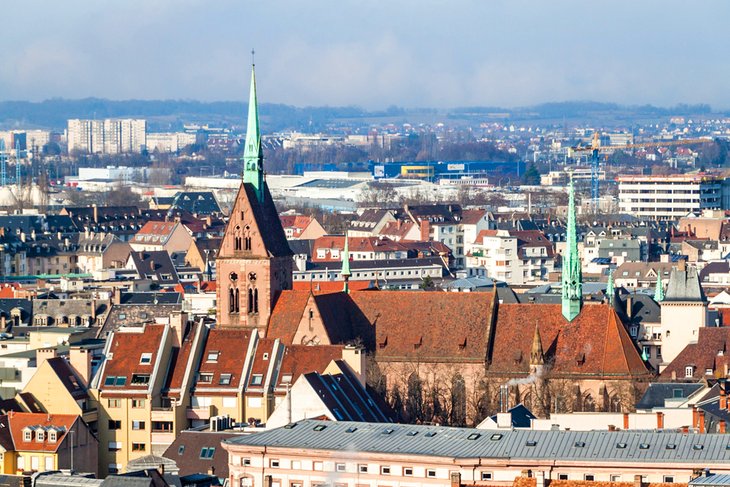
The Eglise Saint-Pierre-le-Jeune is steeped in history. The church was built in the 11th century on the site of a 7th-century Merovingian chapel. Although the building was renovated in Gothic style during the 13th and 14th centuries, the Romanesque elements are still evident in the 11th-century cloister.
During the Reformation (beginning in 1524), the Eglise Saint-Pierre-le-Jeune became a Protestant house of worship. The Eglise Saint-Pierre-le-Jeune still serves as a Protestant church and hosts traditional religious services, concerts, and guided tours.
Address: 7 Rue Saint-Léon, Strasbourg
Maison de l'Oeuvre Notre-Dame
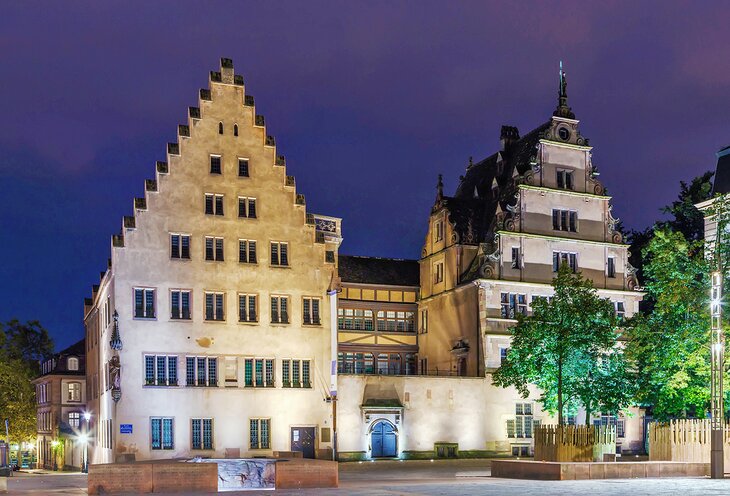
In 1349, the workers responsible for the maintenance of the cathedral established the Maison de l'Oeuvre Notre-Dame. The east wing of the building is the oldest part (and was renovated in the 16th century), and the west wing was built from 1579 to 1585.
Today, the building houses the Musée de l'Oeuvre Notre-Dame, which has one of the finest collections of medieval and Renaissance art in Europe. This collection exhibits masterpieces of Alsatian art, created during the Romanesque era (early medieval period) through the Middle Ages and until 1681.
On display are originals of sculptures from the cathedral as well as paintings and stained-glass windows. Be sure to see the 12th-century Tête de Christ (also known as the Christ de Wissembourg) window, one of the oldest known stained-glass windows.
Address: 3 Place du Château, Strasbourg
Palais Rohan
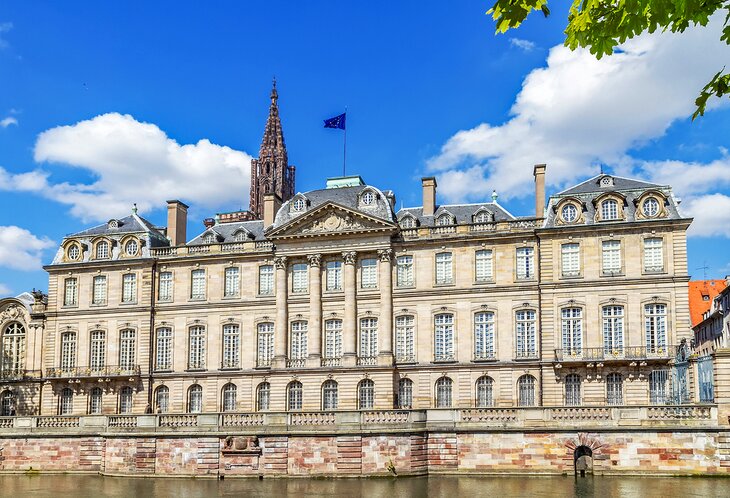
The elegant 18th-century Palais Rohan was the former residence of the Bishop-Princes from 1732 to 1742 (until the French Revolution). The building, owing to its grandeur, is sometimes referred to colloquially as "Versailles in miniature." The rest of the immense building houses three exceptional museums.
Located on the first floor of the Rohan Palace, the Musée des Beaux-Arts (Museum of Fine Arts) has an excellent collection of paintings by Italian, Spanish, Flemish, Dutch, and French masters from the Middle Ages to modern times.
There are works by Botticelli, Corot, Courbet, Delacroix, Giotto, Goya, El Greco, Rubens, Tiepolo, and Véronèse among others.
The Musée des Arts Décoratifs (Museum of Decorative Arts) is located on the ground floor of the Rohan Palace, the former apartments of the Cardinals of Rohan.
You can see the sumptuous rooms of the bishop's apartment, including a library, print room, and chapel, as well as the collection of decorative arts. The collection includes ceramics, porcelain, paintings, timepieces, and goldsmith's art.
Located in the Rohan Palace basement, the Musée Archéologique (Archaeological Museum) has one of the best collections of antiquities in France. The collection includes items from prehistory to the Middle Ages.
Address: 2 Place du Château, Strasbourg
Musée Alsacien
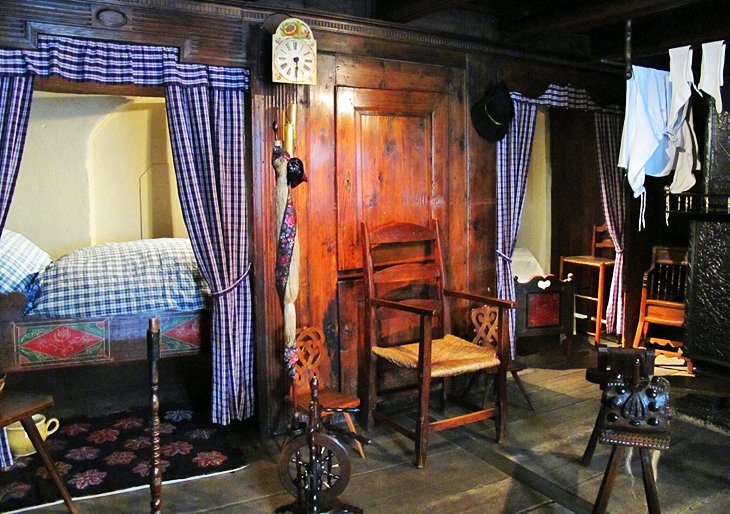
Located in a patrician house built in 1620, the Alsatian Museum displays a collection of folk art, furniture, costumes, and domestic items. Thousands of objects offer an insight into rural Alsatian life in the 18th and 19th centuries.
The museum also features rooms that represent the interior style of different regions of Alsace, including the agricultural plains and the Vosges Mountains. A tour of the museum gives you a feel for the charm of Alsatian homes.
Address: 23-25 Quai Saint-Nicolas, Strasbourg
Place du Marché-aux-Cochons-de-Lait

Near the Maison de l'Oeuvre Notre-Dame is the picturesque Place du Marché-aux-Cochons-de-Lait, one of the city's most charming squares. The square takes its name from the ancient market where suckling pigs (an Alsatian culinary specialty) were sold.
Farther west is the former Grande Boucherie, built in the 16th century as a butcher's house. Today this building houses the Historical Museum (Musée Historique de la Ville de Strasbourg).
Quartier Krutenau
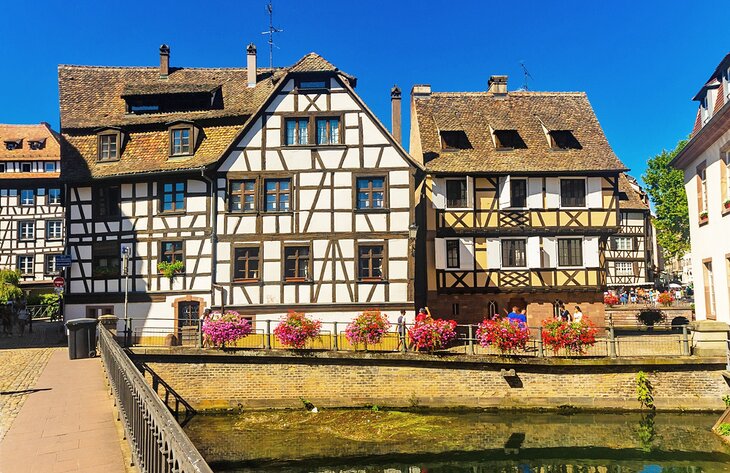
The lively Quartier Krutenau combines old-world charm with trendy restaurants, fashionable shops, and art galleries.
This district of canals and half-timbered homes was once where boatmen and fishermen lived, as indicated by the names of streets such as the Place Saint-Nicolas-aux-Ondes and the Rue de la Tour des Pêcheurs.
This quarter has a friendly village atmosphere and is a pleasant area to take a sightseeing stroll.
Historical Museum
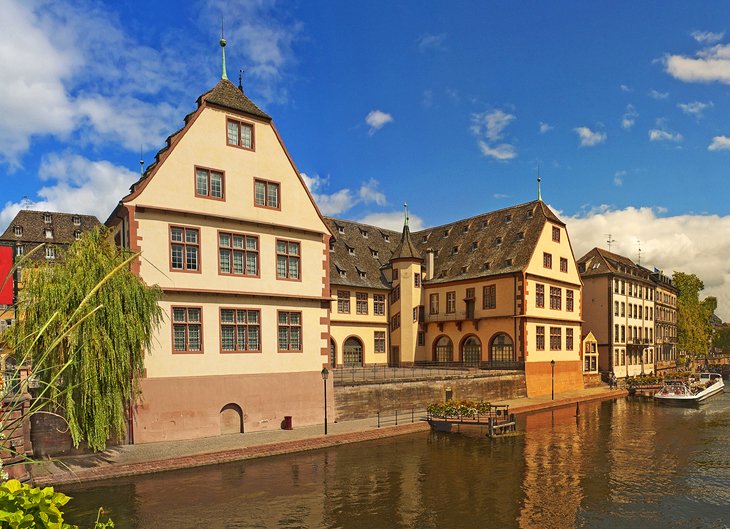
Located in the 16th-century Grande Boucherie (Butchers' House), the Historical Museum offers a comprehensive exhibit of paintings, graphic art, weapons, and everyday objects.
The collections span the centuries from the medieval period to the French Revolution with a few rooms dedicated to the Napoleonic and modern eras.
The crown jewel of the museum is the breathtaking 1/600 scale model of Strasbourg, meticulously crafted to depict the city as it appeared in 1727. This intricate relief map is a true marvel of cartography, capturing the historical essence of Strasbourg with exceptional detail. It presents a bird's-eye view of the city as it was centuries ago.
You can learn about Strasbourg's politics, society, and economy throughout the ages. The museum dedicates exhibits to important political figures such as the famous General Jean-Baptiste Kléber.
Also on display are the costumes and furniture of ordinary citizens, which offers insight into the everyday life of Strasbourg in times past.
Address: 2 Rue du Vieux-Marché-aux-Poissons, Strasbourg
Musée d'Art Moderne & Contemporain
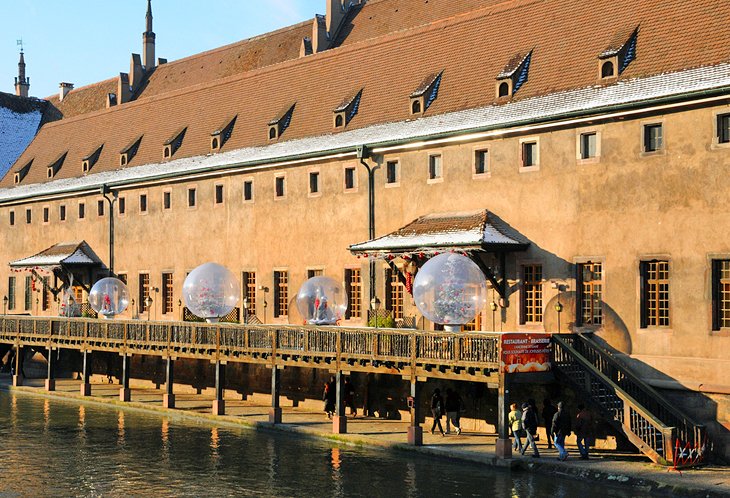
The Musée d'Art Moderne & Contemporain (Museum of Modern & Contemporary Art) occupies a sleek, contemporary-style building on the banks of the Ill River, near the Petite France quarter.
Designed with vast windows and high ceilings, the spacious 10,000-square-meter gallery space is bright and airy.
A must-see attraction for those who appreciate modern art, the museum boasts an expansive collection of 19th- and 20th-century paintings, including works by Alfred Sisley, Pablo Picasso, Claude Monet, Wassily Kandinsky, Hans Arp, Georges Braque, Paul Klee, Max Ernst, Auguste Rodin, Pierre-Auguste Renoir, and Edgar Degas. The museum also hosts temporary exhibitions.
Address: 1 Place Hans Jean Arp, Strasbourg
Parc de l'Orangerie
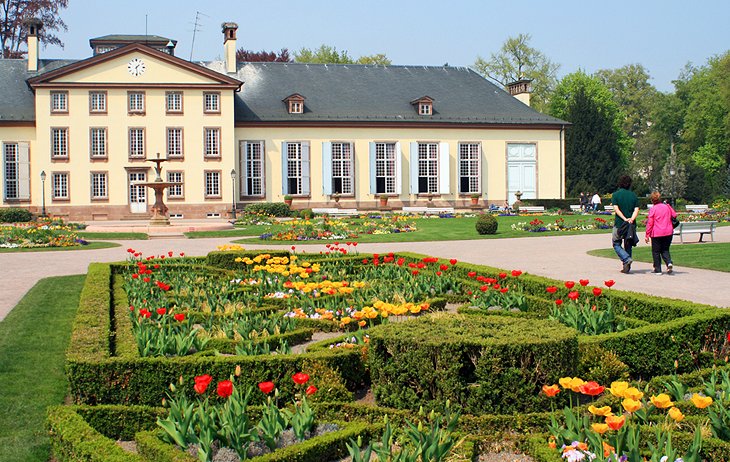
To the southeast of the Palais de l'Europe is the beautiful Parc de l'Orangerie, the oldest park in Strasbourg. The Orangerie Park was created in the early 19th century for the Empress Joséphine.
The garden's Pavillon Joséphine is now used for temporary exhibits, special events, and private receptions.
The Parc de l'Orangerie was created in the style of an English Garden, with its inspiration taken from nature and pastoral landscapes. Perfect for leisurely strolls and picnics, the park has an idyllic atmosphere complete with winding walking paths, a lake, fountains, footbridges, and a waterfall.
The Temple de l'Amour (Temple of Love) and other follies add to the romantic ambience.
Children adore the abundance of things to do, including the park's playground, vintage race car track, miniature farm, and small zoo, which are free of charge. The park participates in a stork reintroduction program. The storks are an iconic symbol of Alsace, and here, they are allowed to nest freely in the park and on nearby buildings.
There is also a bowling alley, and it's possible to go boating on the lake.
Gourmands should make a reservation at the park's Michelin-starred gastronomic restaurant, Le Buerehiesel (4 Parc de l'Orangerie). Housed in a refurbished 17th-century farmhouse, the restaurant features intimate dining rooms with refined décor, additional seating in a sunlight-flooded conservatory that looks out onto gardens, and a tree-shaded outdoor terrace.
Address: Avenue de l'Europe, Strasbourg
Palais de l'Europe
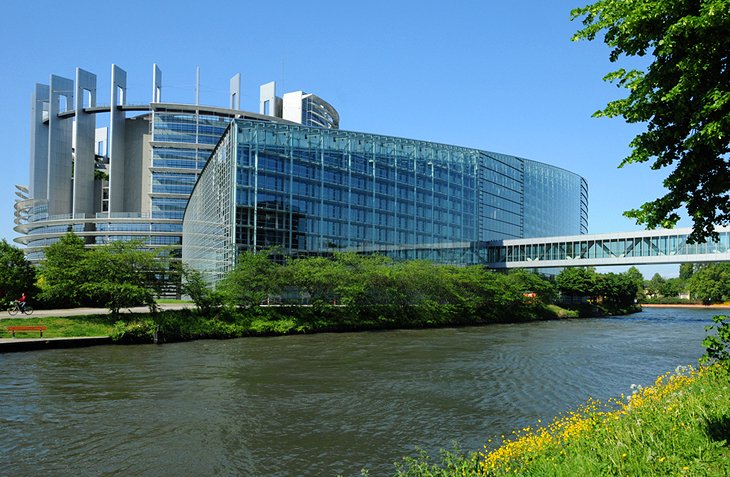
Strasbourg was chosen as the capital of the European Union because the city became a symbol of reconciliation after the Second World War.
Designed by Henry Bernard (a renowned French architect), the ultramodern Palais de l'Europe was built from 1972 to 1977 as a fortress-like structure of nine stories.
The Palais de l'Europe is used by the Parliamentary Assembly of the Council of Europe. Members of the Council of Europe's Parliamentary Assembly meet in the building's Assembly Chamber, a vast tent-like space with a circular seating layout.
The Palais de l'Europe is open to the public for guided tours. Another rewarding thing to do is attend a Parliamentary Assembly debate, held in the Assembly Chamber during a plenary session.
Address: Avenue de l'Europe, Strasbourg
Shop at the Christmas Markets (Marchés de Noël)
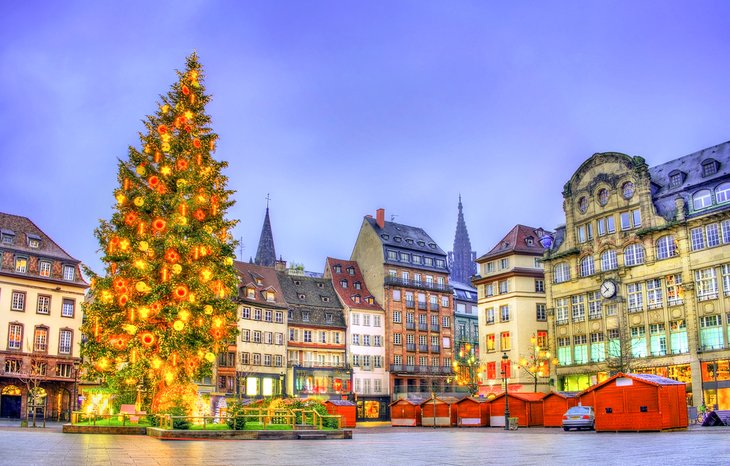
Visiting the Christmas Markets in Strasbourg is a must-do activity during the holiday season. This festive event has been a tradition since 1570, when it was called "Christkindelsmärik" ("Market of the baby Jesus").
Every year in time for the holidays, Strasbourg's houses, streets, and churches are decorated with Christmas lights, and a giant Christmas tree is placed at the Place Kléber. Throughout the city's historic center, around 300 "chalets" (stalls) sell Christmas decorations, artisanal gifts, and seasonal Alsatian delicacies, such as Bredele (Alsatian Christmas cookies) and Mannala (small brioche men).
Highlights of the Marchés de Noël include the artisans' chalets at the Place Broglie and Place de la Grande Boucherie, and the specialty food stalls at Place du Marché-aux-Poissons at the terrace of the Palais Rohan.
The Marchés de Noël in Strasbourg is one of Europe's best Christmas markets and runs from November 25th until December 24th. Although the markets end (and the chalets are removed) late in the day on Christmas Eve, the holiday festivities continue through January 2nd.
Music Festivals and Cultural Events
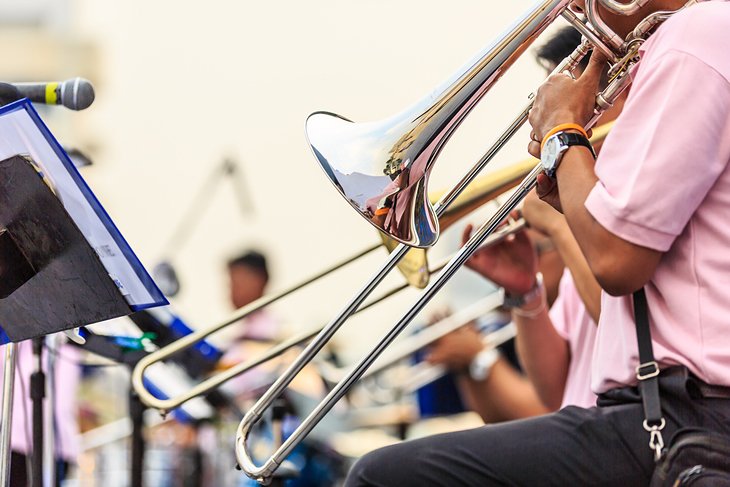
Strasbourg has several excellent music festivals held throughout the year. Les Nuits Européennes in October celebrates a wide range of European and world music.
From November through April, the Jazzdor festival presents a superb program of live jazz music, providing a stage for talented French jazz performers, as well as European and international jazz artists.
From mid-September through the beginning of October, the Festival Musica dazzles audiences with classical music and a variety of other performances including jazz, blues, world music, opera, and musical theater.
One of the most whimsical events in Strasbourg, the FARSe (Street Arts Festival) in mid-August brings lively animation to the streets and squares of Strasbourg's city center. Acrobats and clowns offer puppet shows, mini circus acts, juggling, magic tricks, and burlesque. Poets, musicians, and theater performers also provide entertainment to make audiences smile.
Film buffs will appreciate the Festival Européen du Film Fantastique de Strasbourg, held at the end of September through early October. This unique festival is dedicated to the genre of fantastic cinema, including animation, science-fiction, fantasy, and horror.
Place Gutenberg
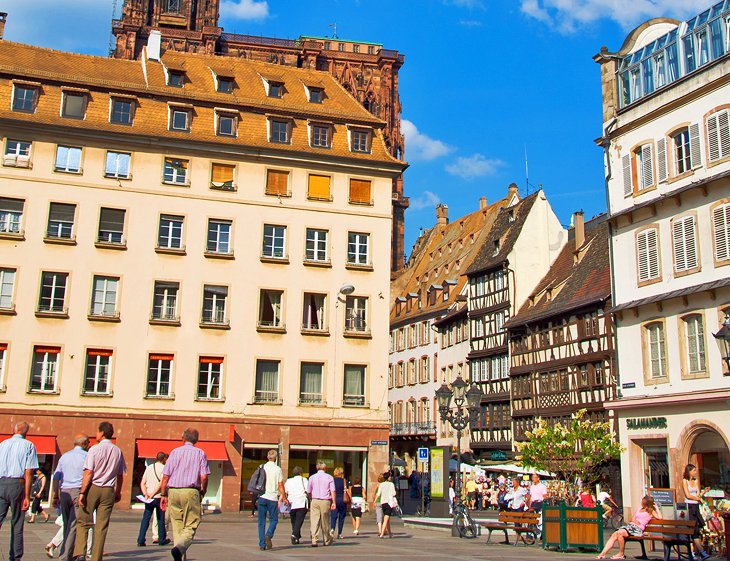
Place Gutenberg is found on the Grande-Île, a short walk from the cathedral. The square centers around a 19th-century statue dedicated to the famous Strasbourg resident Johannes Gutenberg, who invented the printing press around the decades of 1430 to 1450.
The publication of the Gutenberg Bible in 1455 marks a momentous event in history; this bible was the first book to be printed by machine rather than copied by a scribe.
On the southwest side of the square is the finest Neoclassical 16th-century building in Alsace, originally the Hôtel de Ville (Town Hall) and now occupied by the Chamber of Commerce. At the corner of the square near the Rue Mercière, there is a magnificent view of the front of the cathedral.
Synagogue de la Paix
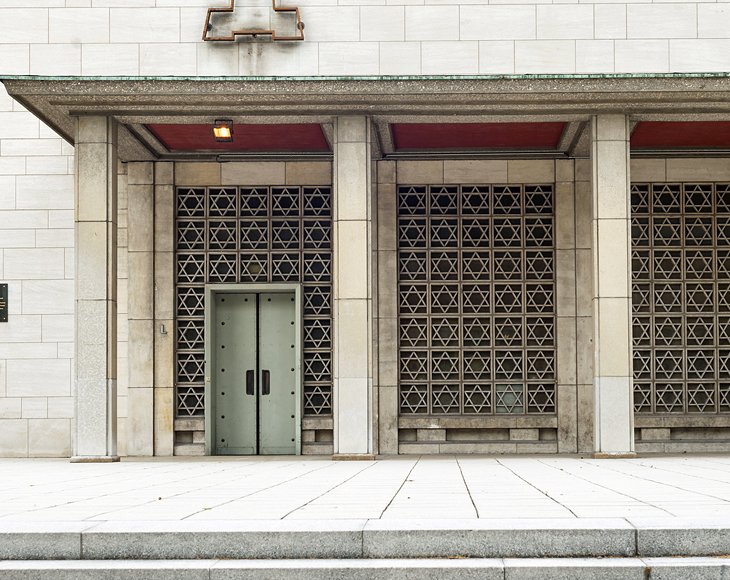
Built in 1954, the Synagogue de la Paix was created to replace the historic synagogue on Quai Kléber that was destroyed by the Nazis in 1940.
Although this monument lacks the grandeur and elegance of the original neo-Romanesque synagogue, it is an important landmark that serves the city's Jewish community, which has had a presence in Strasbourg since the 12th century.
Behind the Synagogue de la Paix, the expansive Parc du Contades is a peaceful space, with leafy pathways ideal for enjoying an afternoon stroll. During summertime, jazz, classical, pop/rock, and other types of music concerts are held the Villa Osterloff bandstand located at the back of Contades Park.
Address: Avenue de la Paix, Strasbourg
More Related Articles on PlanetWare.com
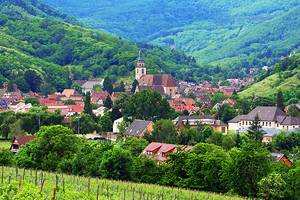
Exploring the Beautiful Alsace Region: Although Strasbourg is less than a two-hour TGV (fast-velocity) train ride from Paris, it feels entirely different because of the distinctive regional architecture, culture, and cuisine. Highlights of Alsace include Colmar (30 minutes from Strasbourg by train) and the quaint villages in the foothills of the Vosges Mountains.
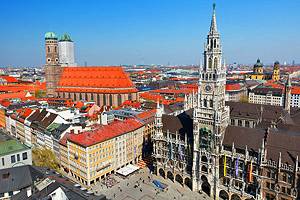
Exploring Germany: Tourists may also enjoy visiting nearby attractions in Germany, which has a border just five kilometers east of Strasbourg. The Black Forest lies less than a one-hour drive away from the Alsace region, and the city of Stuttgart is a two-hour drive from Strasbourg.
